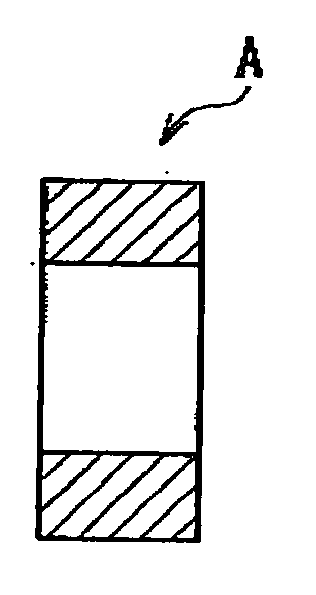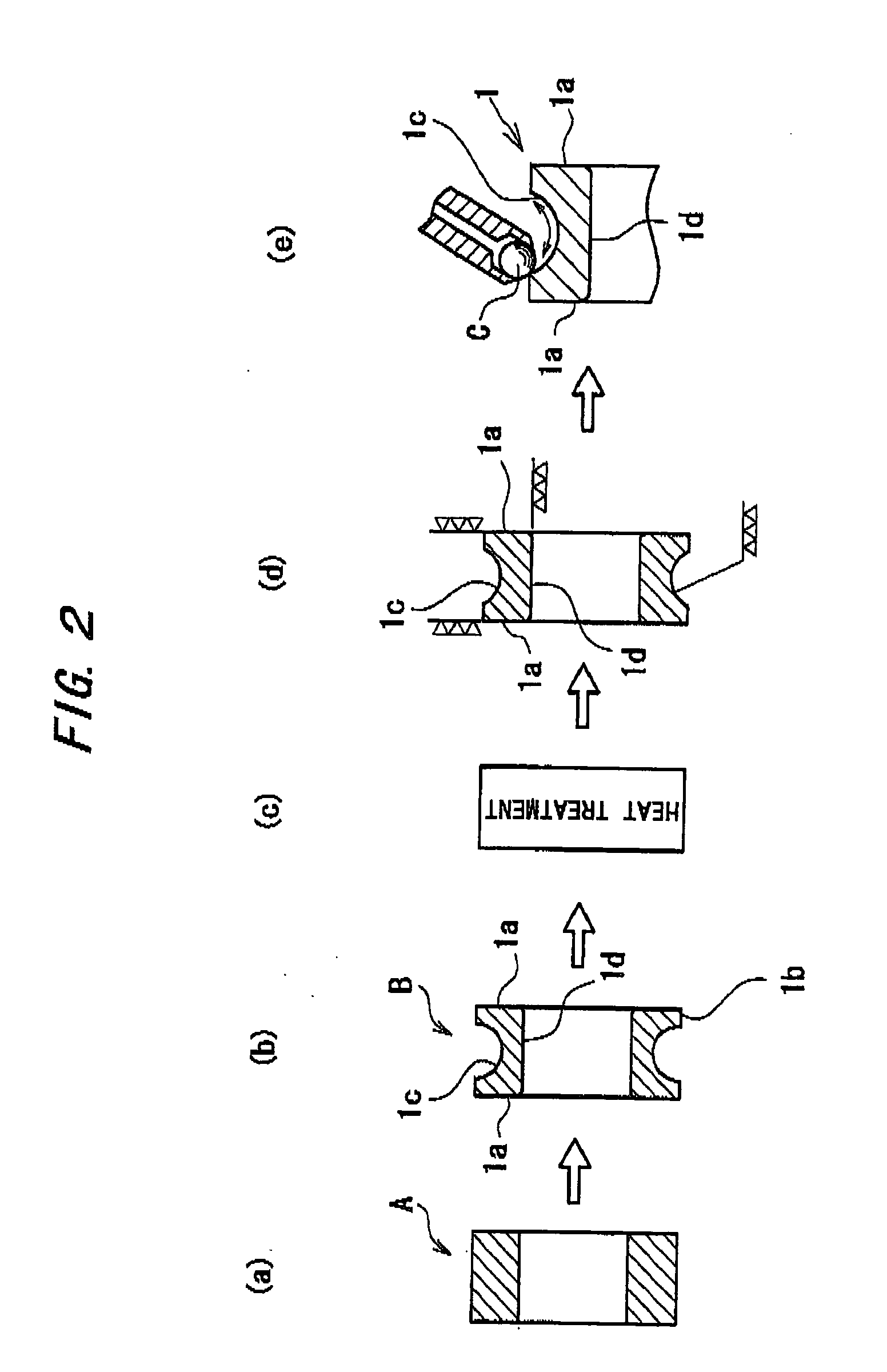Method for manufacturing a bearing raceway member
a technology of raceway member and manufacturing method, which is applied in the field of method for manufacturing a bearing raceway member, can solve the problems of increasing the increasing the cost of steel for bearing manufacture, and high manufacture cost of roller bearings, so as to eliminate the potential risk of the race sustaining tensile residual stress, and prolonging the service life of the bearing raceway member
- Summary
- Abstract
- Description
- Claims
- Application Information
AI Technical Summary
Benefits of technology
Problems solved by technology
Method used
Image
Examples
first embodiment
[0029] A roller bearing shown in FIG. 1 is fabricated using a method for manufacturing a bearing raceway member according to the invention. The roller bearing is arranged such that a plurality of balls 3 as a rolling element are interposed between an inner ring 1 and an outer ring 2 as raceway members coaxially arranged, and that the individual balls 3 are retained at equal space intervals by means of a cage 4. The inner ring 1 and the outer ring 2 are formed from a bearing steel, such as SUJ-2 (JIS Standards), which is hardened by heat treatment. Annular races 1c, 2c of the rings have a surface hardness of HRC65 or more, and a center-line average surface roughness Ra of 0.1 μm or less. The races 1c, 2c have a compressive residual stress of 1000 MPa or more at depth of at least 0.15 mm from the surfaces thereof, and a hardness of HRC60 or more at depth of at least 0.2 mm from the surfaces thereof.
[0030] The inner ring 1 of the roller bearing is manufactured as follows. First, an an...
second embodiment
[0044]FIG. 5 is a group of diagrams showing the steps of a method for manufacturing a bearing raceway member according to a second embodiment of the invention. The figure illustrates a case where the manufacturing method is applied to the inner ring 1 of the roller bearing. First, an annular material A (see FIG. 5(a)) formed from JIS-S55C or a carbon steel for machine structural use is cut by turning whereby an end face 1a, an outer periphery 1b, a race 1c, an inner periphery 1d and the like are formed into predetermined shapes, respectively (see FIG. 5(b)). Next, a blank B thus shaped by cutting is subjected to a so-called bulk heat treatment so as to be hardened to a hardness of HRC55 or so (see FIG. 5(c)). Thereafter, the end faces 1a, the race 1c and the inner periphery 1d of the blank B thus heat treated are finished by grinding to predetermined precisions (see FIG. 5(d)).
[0045] When the process of finishing by grinding is completed, a surface of the race 1c is roller burnishe...
third embodiment
[0050]FIG. 8 is a group of diagrams showing the steps of a method for manufacturing a bearing raceway member according to still another embodiment of the invention. The figure illustrates a case where the manufacturing method is applied to an inner ring 1 of a roller bearing used under a condition that the inner ring 1 is in contact with the rolling element at a maximum surface pressure of 300 MPa or more. First, an annular material A (see FIG. 8(a)) formed from a case hardening steel (steel for carburizing) (equivalent to SAE4320) is cut by turning whereby an end face 1a, an outer periphery 1b, a race 1c, an inner periphery 1d and the like are formed into predetermined shapes, respectively (see FIG. 8(b)). Subsequently, a blank B thus shaped by cutting is subjected to a heat treatment including carburizing and quenching so as to be hardened to a surface hardness of say HRC60 or more (see FIG. 8(c)). Thereafter, the end faces 1a, the race 1c and the inner periphery 1d of the blank B...
PUM
| Property | Measurement | Unit |
|---|---|---|
| roughness | aaaaa | aaaaa |
| pressure | aaaaa | aaaaa |
| roughness | aaaaa | aaaaa |
Abstract
Description
Claims
Application Information
 Login to View More
Login to View More - R&D
- Intellectual Property
- Life Sciences
- Materials
- Tech Scout
- Unparalleled Data Quality
- Higher Quality Content
- 60% Fewer Hallucinations
Browse by: Latest US Patents, China's latest patents, Technical Efficacy Thesaurus, Application Domain, Technology Topic, Popular Technical Reports.
© 2025 PatSnap. All rights reserved.Legal|Privacy policy|Modern Slavery Act Transparency Statement|Sitemap|About US| Contact US: help@patsnap.com



